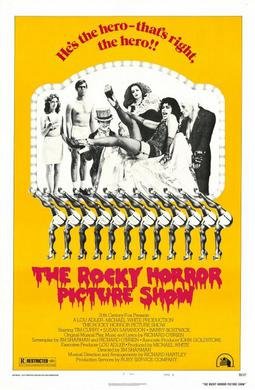The Origins and Premiere of The Rocky Horror Show
The Rocky Horror Show, a groundbreaking stage production penned by Richard O’Brien and directed by Jim Sharman, made its debut on June 19th, 1973, at the Royal Court Theatre in London. This innovative musical, blending elements of science fiction and horror with an electrifying rock and roll score, quickly captivated audiences with its daring and unconventional approach.
Richard O’Brien, influenced by his love for B-movies and rock music, sought to create a show that paid homage to the quirky and often campy genre films of the 1950s and 1960s. His vision was to craft a narrative that was both entertaining and subversive, challenging the norms of traditional theatre. O’Brien’s script and music, filled with wit and memorable melodies, set the stage for what would become a cultural phenomenon.
Director Jim Sharman played a pivotal role in transforming O’Brien’s vision into a theatrical reality. With a keen eye for detail and a passion for avant-garde theatre, Sharman brought a unique flair to the production. His direction ensured that every element, from the outlandish costumes to the dynamic set design, worked in harmony to create an immersive and unforgettable experience for the audience.
Integral to the show’s success was its original cast, particularly Tim Curry, whose portrayal of the flamboyant Dr. Frank-N-Furter became iconic. Curry’s charismatic performance, combined with his powerful voice and commanding stage presence, brought the character to life in a way that resonated deeply with audiences. Other notable cast members included Patricia Quinn as Magenta and Richard O’Brien himself as Riff Raff, each contributing to the ensemble’s dynamic energy.
The immediate reception of The Rocky Horror Show was a mixture of intrigue and astonishment. While some critics were initially puzzled by its unconventional style, others praised its originality and boldness. Audiences, however, reacted with enthusiasm, and the show quickly garnered a loyal following. The premiere’s historical context, set against the backdrop of a rapidly changing cultural landscape in the early 1970s, only added to its allure.
To provide a deeper understanding of the show’s origins and impact, one can refer to theatre archives and interviews with the creators and cast. These resources offer valuable insights into the creative process behind this legendary production and its enduring legacy in the world of theatre.
The Evolution and Legacy of The Rocky Horror Show
The Rocky Horror Show made its debut on June 19th, 1973, in London, quickly capturing the imaginations of its audience with its unconventional narrative and flamboyant characters. This success on stage rapidly paved the way for its transition to the silver screen. The adaptation process began in earnest, with a clear intent to retain the essence of the original while making suitable modifications for a cinematic experience. Notably, several original cast members, including Tim Curry, Richard O’Brien, and Patricia Quinn, reprised their roles, ensuring a seamless transition and preserving the authentic spirit of the stage production.
The film adaptation, titled The Rocky Horror Picture Show, premiered in 1975. While it initially received mixed reviews from critics, its unique blend of science fiction, horror, and musical elements gradually garnered a dedicated following. The film’s reception contrasted starkly with the stage production’s immediate acclaim, but over time, it carved out a niche in popular culture, thanks in part to its interactive midnight screenings. These screenings became a hallmark of the film’s legacy, encouraging audience participation through costumes, props, and call-backs, thereby transforming passive viewership into an immersive experience.
The Rocky Horror Picture Show’s rise to cult status can be attributed to its subversive themes and groundbreaking approach to gender and sexuality. Its impact on pop culture is profound, influencing subsequent works in musical theatre and film. The show broke down barriers in its portrayal of non-conformity, paving the way for more diverse and inclusive narratives. Furthermore, it has inspired countless productions, parodies, and homages, cementing its place as a cultural touchstone.
The global community of ‘Rocky Horror’ fans continues to thrive, with fan sites, conventions, and social media groups dedicated to celebrating the show’s enduring appeal. Scholarly articles have examined its significance, and interviews with cast and crew members offer insights into its creation and sustained relevance. The fan culture, characterized by its enthusiastic embrace of the show’s participatory elements, underscores the lasting impact of both the stage show and the film. Midnight screenings remain a beloved tradition, illustrating the timeless allure of The Rocky Horror Show and its remarkable journey from its 1973 debut in London to becoming a seminal piece of entertainment history.

